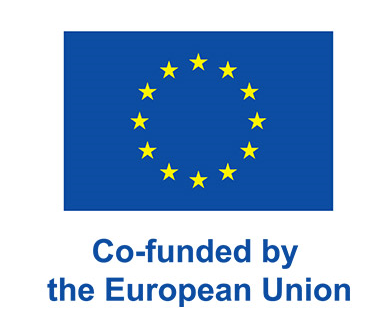The democratic transition in Bulgaria: who lives in “Block 1989”?
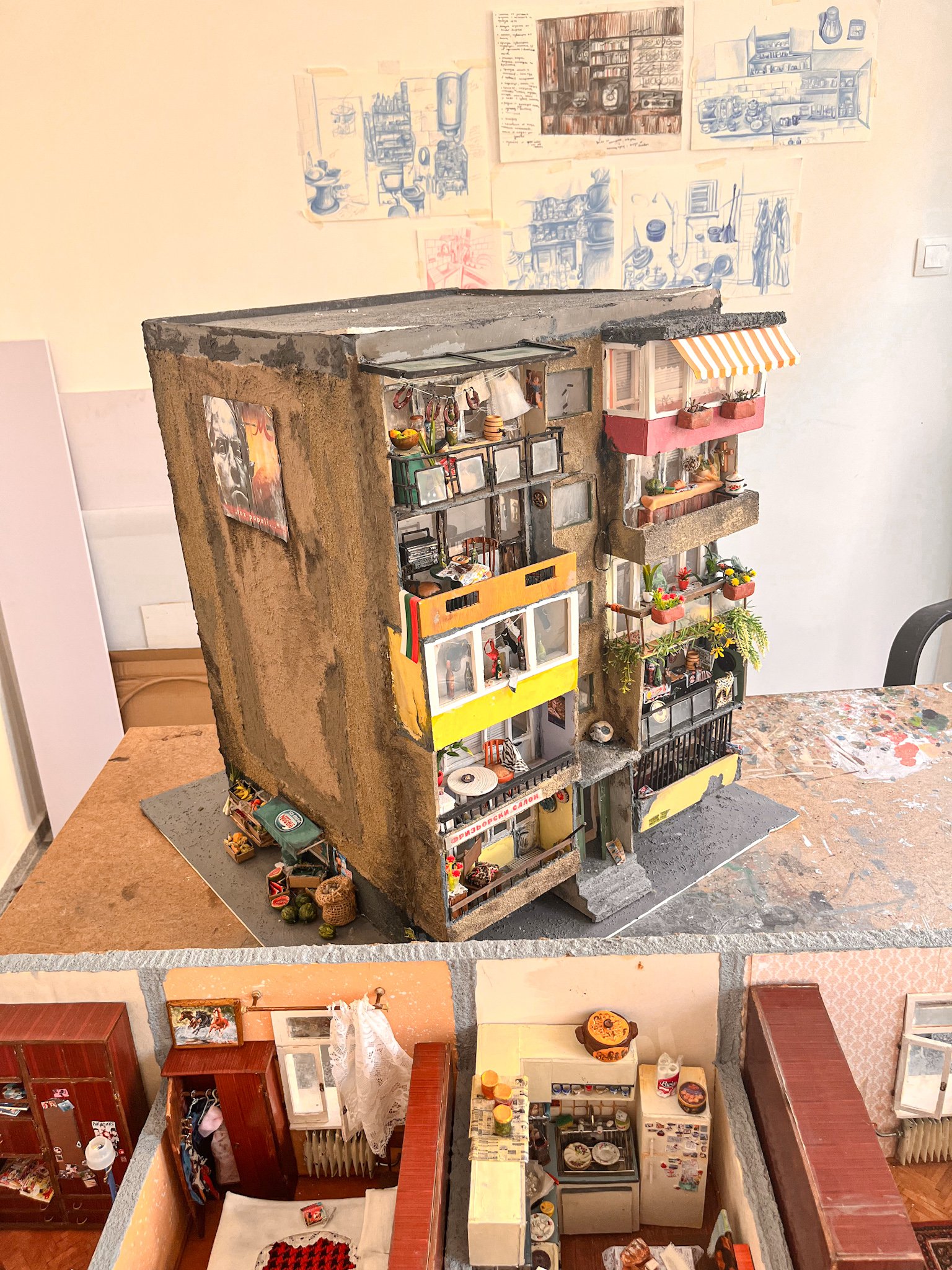
A day after the fall of the Berlin Wall, on the 10th of November 1989, the Central Committee of the Bulgarian Communist Party voted for Todor Zhivkov's resignation in a coup provoked by the Communist Party itself. Former Foreign Minister Petar Mladenov took over as a General Secretary of the Central Committee. It seemed that for many Bulgarians, including Todor Zhivkov himself, this change came as a surprise. Zhivkov was General Secretary of the Bulgarian Communist Party from 1954 to 1989 and was the longest-serving leader in the Eastern Bloc.
Forced by thousands of Bulgarians who flooded the streets of the big cities, gathering in democratic protests, the new state leader, Petar Mladenov, announced that free parliamentary elections will be held at the beginning of 1990. The demonstrators insisted on the abolition of Article 1 of the Constitution, which gave power to the Communist Party in all aspects. Eventually, in December 1989, Mladenov announced that the monopoly of the Communist Party will be revoked. On the 10th of June 1990 Bulgaria held its first democratic elections.
This is how the democratic transition in Bulgaria began.
But how did it end? What is its aftermath? Is the democratic transition actually over? What do we know about it and do we care at all?
These and other similar questions occupy Kalina Ivanova and Anna Ivanova. The two artists share a surname and a profession. They are not sisters, but they both describe themselves as „children of the transition“, even though they were born a decade after Bulgaria started its democratic transition in 1989.
In their first exhibition, Kalina and Anna presented a miniature of a residential panel building called „Block 1989“ and another one called „Apartment 2007“. In these miniatures, the marks of socialism stand out. However, many of the items bear witness to the transition to democracy and the introduction of Western culture in Bulgaria.

“Block 1989” is a collective image of a typical panel block from Eastern Europe, Bulgaria specifically, but it's a universal look for this area. We wanted to create a very relatable image with everything that is included in the miniature, with the little details that mark people. But we also wanted to show how people mark the place they live in. So “Block 1989” is an architectural representation, but it is also very much about the life that people live there”, says Anna.

„We were born around 10 years after 1989 and we are offering our point of view as the children of the transitional period. And that's why the other project, the apartment, is called „Apartment 2007“ because it marks another year of transition. It is the year that Bulgaria joined the European Union. We wanted to take a look at how Bulgarian culture looked the year we entered the Union because you can't avoid all the traces of the past.
And even though in 2007 already 18 years have passed since the end of the regime, its influence on our homes was still really strong. Even with the new things that came – modifications of the apartment and the introduction of new technology and computers, new TVs and decorations, the presence of the past is still very strong.
We grew up in this period and we still have no explanation for everything that's around us. We are just expected to… to live with it and not ask too many questions. Or if we ask questions, we get really polar answers depending on who's asking and who's answering“, explains Kalina.
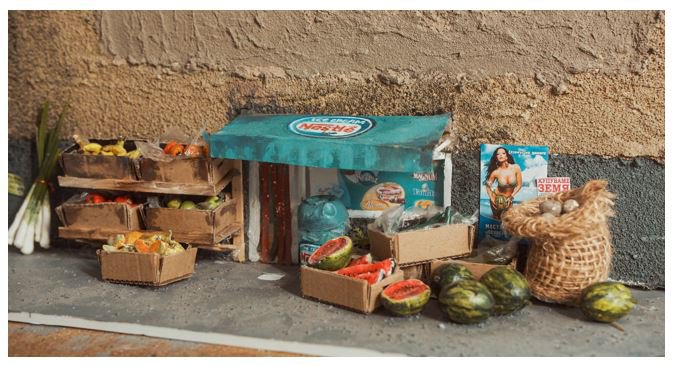
“Block 1989” and „Apartment 2007“ attracted many visitors to the exhibition in Sofia which was extended due to great interest. It is easy to see why there was a stream of people that came to see the miniatures and took numerous photographs - everybody recognizes something from their life in “Block 1989” and „Apartment 2007“. And the similarities are striking. The miniatures are so precise that you can easily recognize the old cupboard in the kitchen, your favorite snack, or even your neighbor.
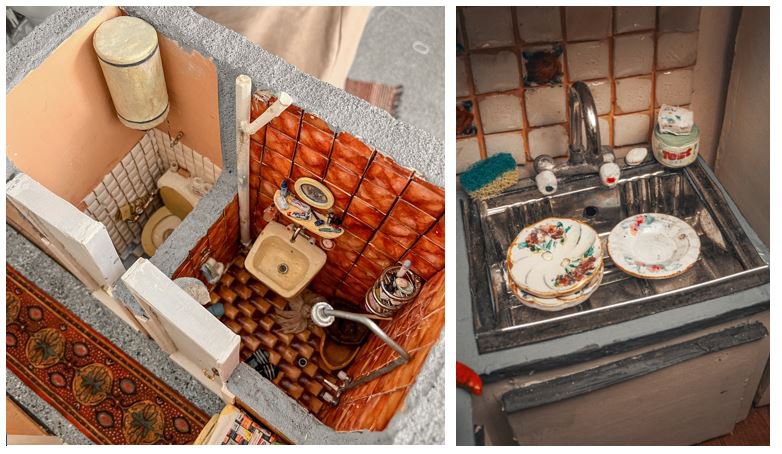
„I was surprised by how strong the reactions were. I know that people liked it and thought it was cute when they saw it online, but seeing in person the look on their faces and how they lit up and how happy it made them see these familiar things, that was very special“, Anna reflects on the exhibition.
She also had a very concrete cupboard as an inspiration for the living room of „Apartment 2007“: „These things are very vivid in my memory. I remember this area in my grandmother's house, the bar with the alcohol and the treats for guests. And I remember me and my brother opening it and stealing one candy at a time so that no one would notice. But then when guests came over and my grandmother took out the chocolates, there was nothing in there. And she got really angry. So, it was things like that… everything in the apartment is based on our experiences that we have found to be universal for everyone.“
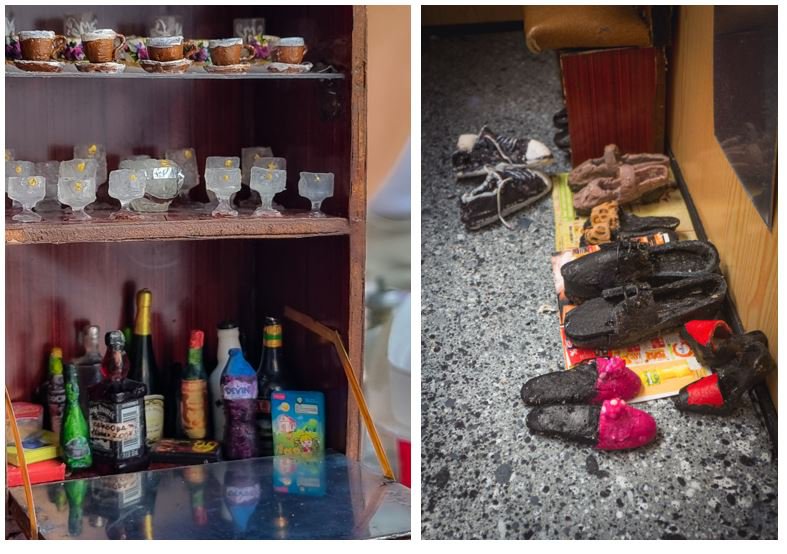
The two artists claim their right to spark conversation about a period of time that they have not experienced directly, but that has shaped their childhood, and not only. Besides the miniatures, Anna and Kalina have created stories about the inhabitants of “Block 1989” and „Apartment 2007“.
For example, there is Tanya Valcheva who lives in „Apartment 2007“ and who „grew up on the good side of socialism“. The fall of the regime was a turning point in her life and her curiosity for Western culture transformed into a fixation. Her unattainable dream to be identified with the West is mirrored in the cheap Parisian triptych that she has in her apartment.
Tanya's daughter, another fictional character, is based on Anna's and Kalina's childhood: „Anne-Marie is a sixth grader and even though she is technically a few years older than us, she is roughly based on us as kids: her interests, her sense of style, her overall sense of confusion. She is growing up in her really old room that is… how do I say it? Well, it is heavy on Soviet furniture, let's say.“
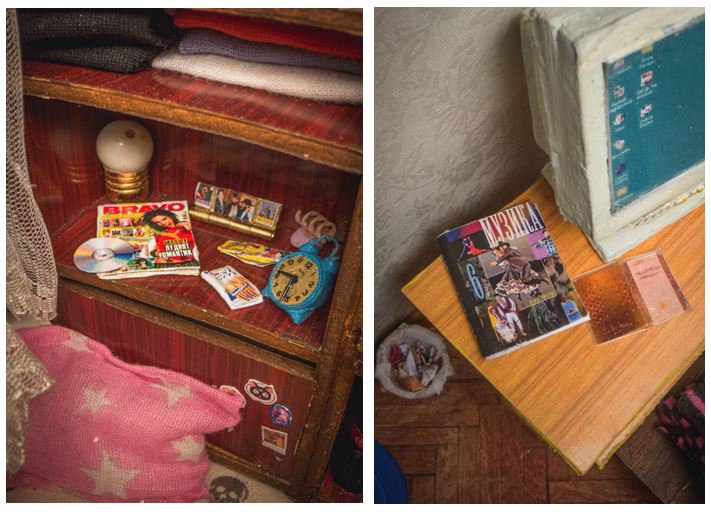
But Anne-Marie is growing up with technology and Western culture. She has a computer and reads „Bravo“ magazine and, as far as we can see from the posters in her room, her „emo phase“ is at its peak.
Kalina adds: “This girl lives in constant dissonance between the post-socialist world, which surrounds her, and the world shown in Western movies, series, and books. She is always dreaming of a better place somewhere else. And this is the reality of the children of the transition“.
“I think that the gap between her and her parents is really huge, it is something that's typical for the period. Her parents couldn't relate to anything that she's interested in and vice versa”, adds Anna.
“Block 1989” is the result of an assignment that Anna and Kalina had while studying in Falmouth, England. Nothing in the English city looked like “Block 1989” and this sparked the girls’ enthusiasm for the project. The miniature provoked Anna and Kalina with new questions about the Bulgarian transition to democracy and the gap between “Block 1989” and what was surrounding them in Falmouth. So it was only natural to continue exploring the topic. The National Culture Fund of Bulgaria also recognized the importance to spark a new conversation on the transitional period and financed the creation of „Apartment 2007“.
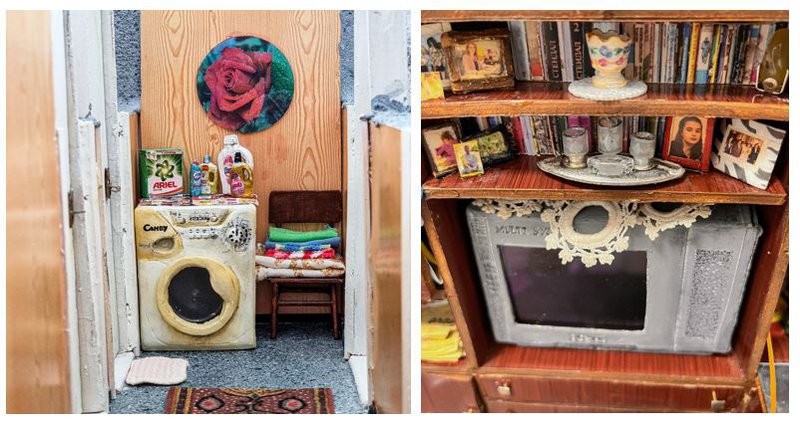
The success of the exhibition and the media attention attracted negative reactions as well. As Kalina sees it, this only proves the need to talk more about the democratic transition in Bulgaria and its aftermath: “If you're a person in your 50s, for example, and you hear about this project, but you don't really read much about it, your reaction will be “This is really unnecessary. Why should this be in a gallery, I have it at home. It's not something glamorous. It should stay pushed away.”
And this is exactly why we started this project and this has been driving us this whole time. We want to challenge this view. We want to talk about what can be shown in galleries and what counts as art.”
For Anna, it is important to “confirm to people that this is a part of them and this is a part of what we are as a people, and it should be something that makes us happy rather than ashamed or… hoping to have something better around.”
Regardless of how people feel about it, the traces of socialism mark more than the homes of Bulgarians. And Anna and Kalina are not willing to sweep the past under the miniature rug. “Block 1989” and „Apartment 2007“ have become hits on social media and accommodate a new dialogue on the past, led by the children of the transition.
More on: @slavki.prikazki
Photographs: Dimitar Popov, @dimifilm
This article is part of the online campaign in the scope of the project “Female perspectives on the democratic transitions of the 1970s, 1980s and the 1990s” .
The project is co-financed by the European Union.
